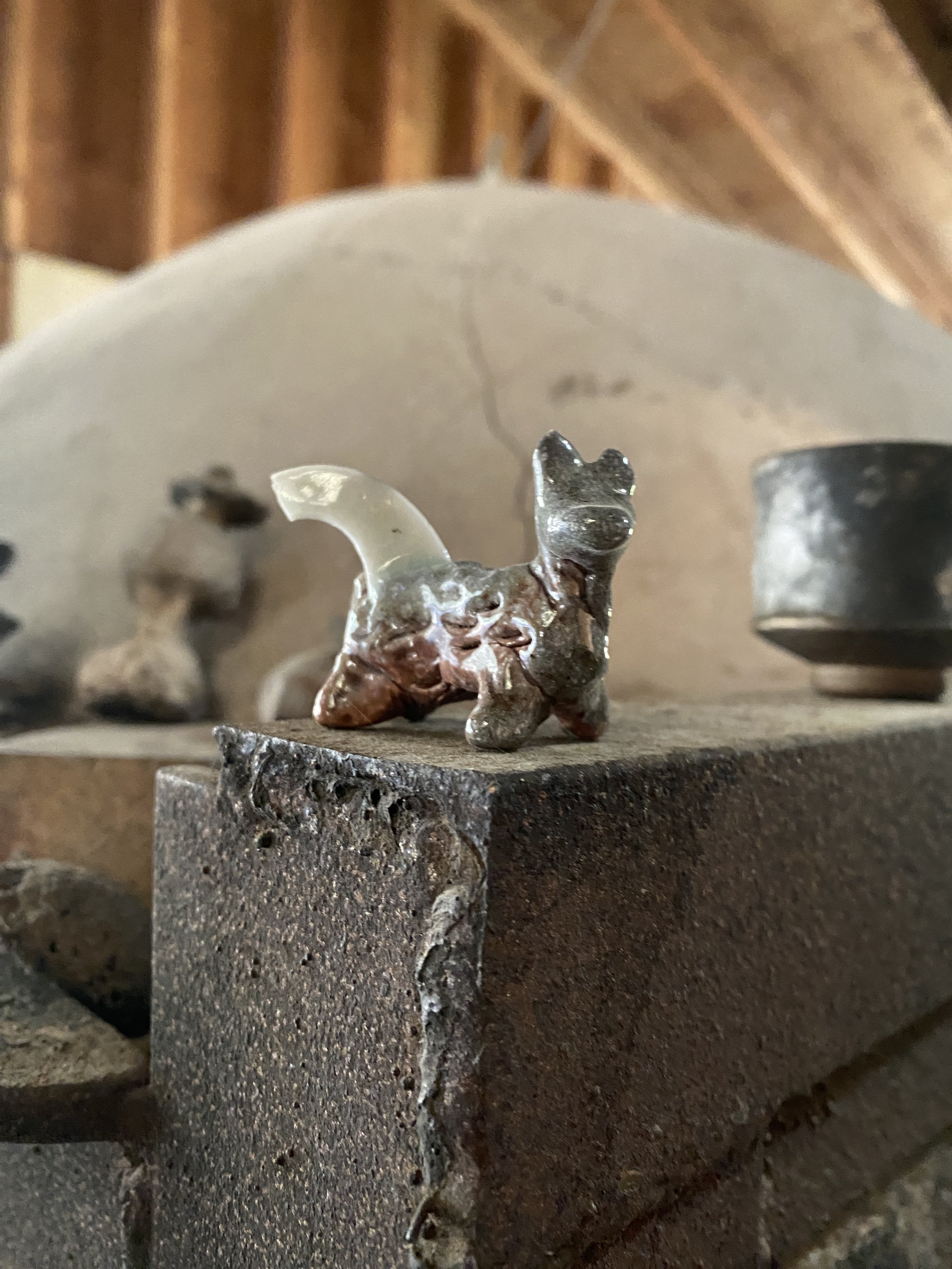Week 12 - Wood-Firing at Cobb Mountain
For the past five days, I’ve been doing a wood firing with Scott Parady at Cobb Mountain Art and Ecology Project. I’ve been learning a ton and having a blast; the people (and animals) here are wonderful, and I am so grateful to be here on a full scholarship.
In extremely exciting news, I’ve just officially accepted a long-term wood-fire residency position here! My residency starts in September and I’ll be living and making here for the next 1-3 years. It’s amazing how this firing aligned so well with NCECA and the timeline for the residency offer. I’ve been able to get a nice run of the studio and land and bond with the other residents that will be staying on for another year. I am confident that my practice and I will thrive here.
Scott’s property is beautiful. I’ve been savoring the solace of the forest with the great weather Cobb has seen this week. There are a handful of roads leading up to the top of the mountain that I’ve explored and enjoyed running on. Lots of clay in the soil, too. They say it’s a cone 7-8 body, but I stuck some unprocessed test rocks in the wood kiln just for funsies.
The studio space is great - each resident has a decently sized, semi-private corner or private space and access to a communal wedging table, slab roller, and clay mixer. We are responsible for paying for our own materials and fuel, which will be a big change for me, but I think it’s vital I understand the costs of production as I continue to pursue a career in ceramics. I intend to do a lot of once-firing while I’m here, and reclaim/recycle as much clay as I can. There is a lot of old stoneware from past residents up for reclaiming, and ways to source free wood on Scott’s property and the surrounding state forest land. With the hands of the other residents, I think I’ll be able to make firings and materials very affordable.
Scott’s loading process is a lot different than I’m accustomed to. He uses senbeis, a traditional Japanese wadding technique, to wad all his pots, with a mix of fireclay, EPK, and sawdust/rice hulls. The slightly concave discs of wadding allow for soft subtle flashing, rather than harsh marks from balls. They cover the kiln floor in crushed oyster shells, which is something I’ve been wanting to try for my large works anyway, and protects the floor while also eliminating layers of kiln wash building up and flaking off during firings. They also use wadding “crowns” here - another method I’d not seen before, to stilt pots. I tried this out with one of my cups using shells (top right photo).
Their stoking method is also a lot different than the wood firings I’ve participated in at IUS and University of Minnesota. Instead of tossing logs in, we stack them in the stoking door and slowly push them in as the kiln chews the fuel, until they’re hanging over the edge and are pushed or drop in on their own. It allows for a lot more control and less fluctuation between stokes. It’s a lot harder to choke out the coal bed this way, too.
So far, I’ve worked 3 6-hour shifts; climbing the kiln from ~900 to 1200 (this was when we switched from kindling the coal bed to door stacking), from ~1800 to 2000, and from a flat ^11 (2250) to a 1/3 down ^12 (2350). We started side stoking 2 pieces before during my second shift (yesterday 4-10am) and during my last one, 24 hours later, we were working to maintain the front temperature while raising the back, side-stoking between 6 and 12 pieces before each front door stack drop. We’re also now tossing in a log of eucalyptus in the front before resetting the door stack.
We’ve been interspersing eucalyptus with pine, fir, and oak in the front stokes. We’re side-stoking with pine and fir, saving the eucalyptus side stoke for the tail end of the firing. The pine and fir burn fast, the oak and eucalyptus burn longer and hotter. Scott sourced the eucalyptus from somewhere farther down the coast and hasn’t fired with it for a long while but thinks it might produce some interesting ash effects. It’s an invasive species from Australia that eradicates other trees by depleting the nutrients and releasing oil into the soil that inhibits the growth of nearby species. We’re not sure if the oil will have any notable effects when burned; it’s exciting to be a part of a relatively experimental firing.
a cone dog by casey beck
I’ve enjoyed splitting logs and side stoke with the electric and gas splitters, getting better at quickly telling the different types of woods apart. It’s satisfying and meditative and smells amazing. Part of my residency here will be doing work-trade to cover part of my rent, which will be a lot of wood splitting and forest maintenance. I’m looking forward to it.
there was an earthquake with a long tremble during the second firing shift! hoping it didnt knock over any pots




















